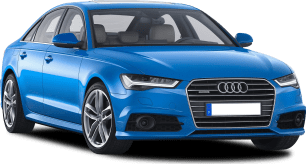To understand why the Transit is venerated so, the 1965 original instantly exploded the prevailing van mindset.
Before that, most, barring small European panel vans such as the French "fourgonnette" set, were narrow forward-control vans. With the engine under the front seats, they proved fatiguingly hot, smelly, noisy, crude, uncomfortable, slow, cumbersome and often dangerously wayward.
In contrast, the big British Ford was literally and metaphorically streets ahead of the pack, with a wide stance, bold design, thoughtful packaging and American-inspired car-based engineering.
Commerce and private buyers alike embraced it with almost fanatical fervour and rivals were forced to quickly follow suit.
Nigh-on 60 years ago, that first Transit’s tech might have seemed almost Cybertruck-like within its competitor set, but without the galling cost, aesthetics, hubris and cult. Ford’s Steve McQueen to Tesla’s Elon Musk.
So, how much does the real thing cost nowadays in Australia?
In dealers now, Transit Custom prices kick off from a hefty $56,590, before on-road costs, but there are plenty of features as well as innovation to help justify the circa-10 per cent premium over, say, a Toyota HiAce – including winning the 2024 International Van of The Year award.
Initially, the Custom is available in standard Trend short wheelbase (SWB) and optional 400mm-stretched long wheelbase (LWB) styles, the latter for an extra $1000.
Being workhorses first, both versions include 1+2 bucket/fixed-bench seating for three people up front, eight-way driver’s seat adjustability, tilt/telescopic steering, heated outboard seating, three cupholders, two glove boxes, a multitude of storage areas on the dash/in the doors/under seats, powered folding exterior mirrors, one-press up/down driver’s powered window and illuminated steps for safer entry/egress. Plus, a rear bulkhead with window and a load-through hatch into the cargo area behind (as before) for really long items is fitted.
Meanwhile, in/above the cargo area, you’ll find tie-down loops, bright LED load-space lights, a moulded load floor liner, floor-to-ceiling load-area protection, a kerb-side load door, rear twin barn doors that open to 180 degrees and integrated roof racks.
The Trend also includes push-button start, climate control air-conditioning, a 12-inch digital instrument cluster, swish 13-inch central touchscreen offering the excellent 'SYNC 4' multimedia system, a 180-degree view reversing camera, sat-nav, wireless Apple CarPlay/Android Auto, digital radio, a wireless phone charger, USB C/A ports and an Australian Ford-first 5G modem, to facilitate connectivity such as the new 'FordPass' app for remote vehicle info and data access.
Plus, a host of driver-assist safety, like AEB, collision warning tech, lane-keep support systems and adaptive cruise control are also present, as well as exit-warning alert to help stop cyclists being doored. More on these in the safety section below – along with how the Custom won Euro NCAP’s highest-ever van crash-test rating.
Additionally, a host of work- and play-related options are available.
Options for the LWB include 'Load Space Refrigeration' and a 'Secure Visibility Pack' featuring steel instead of windows, extra cameras, a dash cam and digital rear-view mirror, a choice of 58 special-order colours (for a reasonably-priced $1400) and windowless side-door panels.
Finally, the popular Sport grade returns as a $3400 two-seat SWB option, as well as in a new Double Cab five-seat LWB configuration with a fixed middle bench seat, and starting from $62,990, before ORC. Ford calls the latter the ‘crew-friendly’ choice.
Among other things, both include sharper-looking wheels, a body kit and racier trim inside, as well as questionable bonnet stripes.
But you know what’s not in question? The Transit Custom’s design and engineering credentials.







